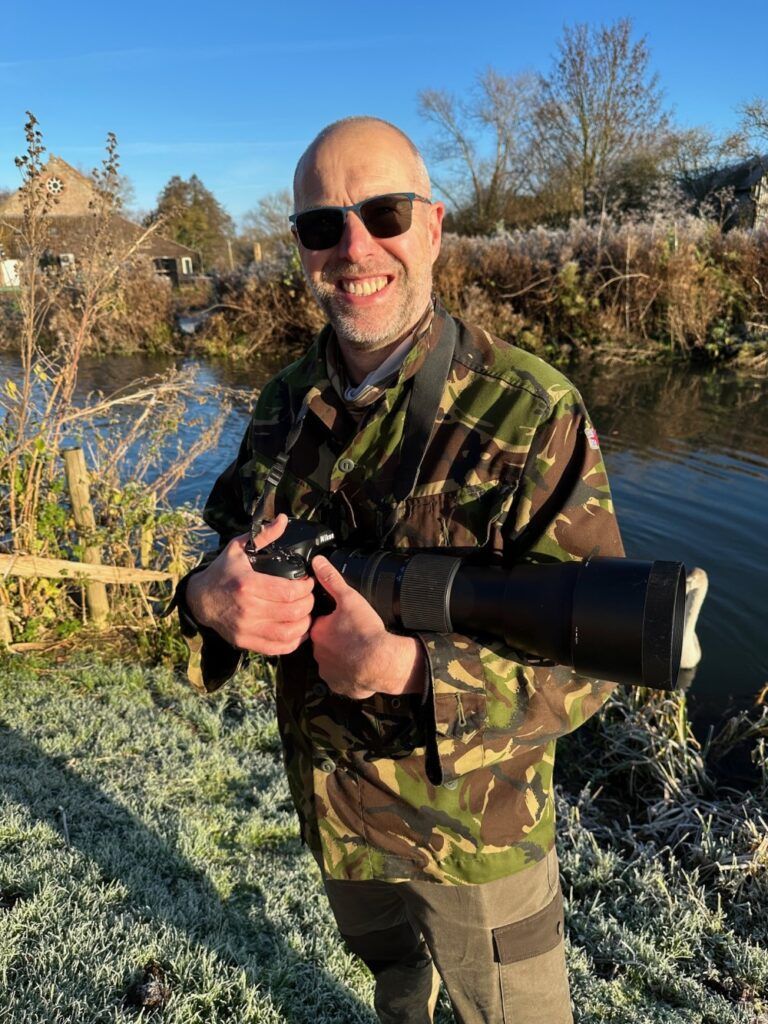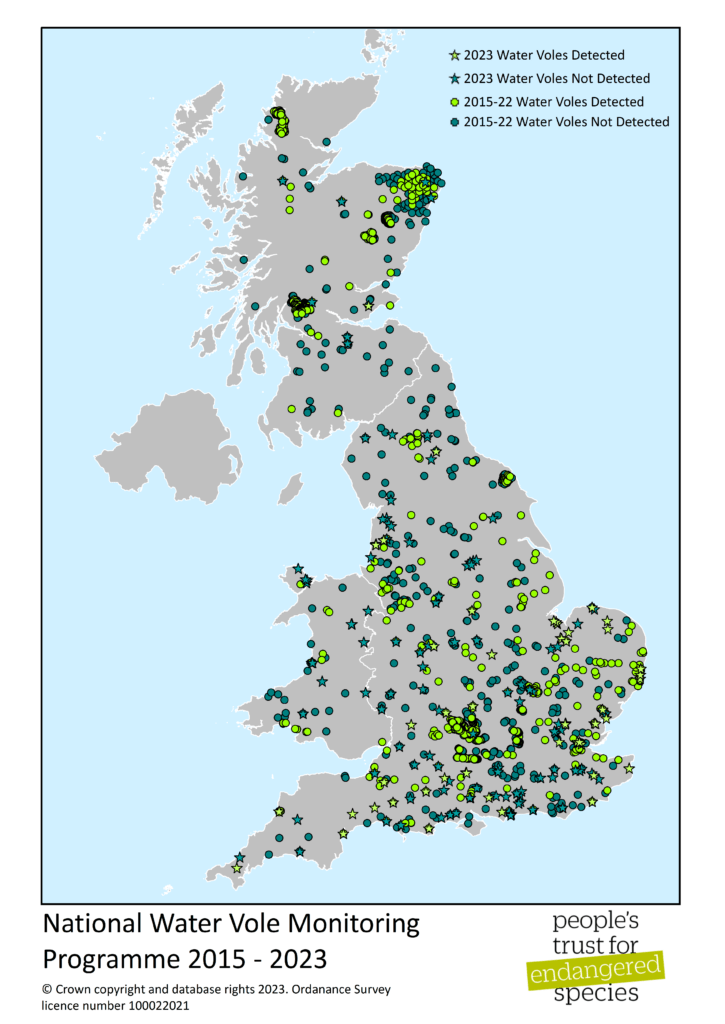Watching water voles in 2023
Last year, PTES volunteers played a crucial role in helping us map the whereabouts of Britain’s water voles. The results from the National Water Vole Monitoring Programme (NWVMP) in 2023 were fantastic and it’s the dedicated time and effort put in by our monitors that means we can all look towards a brighter future for endangered water voles.
PTES Water Vole Officer, Emily, launched our new water vole survey training course in 2023. She delivered the course, Water Vole Ecology and Field Signs, to over 350 participants online and in-person to conservation groups, RSPB reserve staff and Wildlife Trust members/rangers across the south. We saw a subsequent spike in the number of newly registered monitoring sites as a result.
In 2023, we received data from 176 sites across 46 counties in England, Scotland, and Wales. 271 surveys were carried out in total, as some sites have multiple transects. Water vole signs (latrines, feeding signs, burrows, and sightings) were detected on 53 sites. The county with the most sites surveyed was Essex, with water vole activity detected on 11 of 18 sites. West Sussex, Norfolk and Hampshire each had more than 10 sites surveyed. Water voles were detected on 69% of sites in Norfolk, compared with only 20% of sites in Hampshire and 14% of sites in West Sussex.
How does data compare with 30 years ago?
If you’ve registered your own site with the NWVMP, you might be wondering why we talk about the need to resurvey “historical” water vole sites. Between 1989-90 and 1996-98, Vincent Wildlife Trust (VWT) conducted two national water vole surveys, which surveyed 2970 sites and demonstrated a catastrophic decline of water voles across Britain. In 1989-90, water voles were present at 1,418 sites (48%). However, by the time the sites were resurveyed between 1996-98 the number of sites with water vole populations had crashed to 461 (16%). Our water vole population was estimated to have experienced a loss of 88% over just seven years.
Following these surveys, there was a concerted effort to restore water vole habitats and control invasive, non-native American mink. Many of us thought it may be too late for water voles to recover.
In 2015, PTES launched the National Water Vole Monitoring Programme (NWVMP) to bring together all current monitoring efforts across the country. Every year we aim to resurvey as many of these historical sites as possible, to detect what changes have occurred since the 1990s.
In 2023, our volunteers surveyed 117 of the historical Vincent Wildlife Trust (VWT) sites. This was a significant increase from just 51 which were surveyed in 2022.
In 1989, water voles were detected on 96 (82%) of those 117 sites. By 1996, only 24 (21%) of those sites had water voles. In 2023, just six (5%) of those sites had water voles. These were three sites in Essex, two in Norfolk, and one in Oxfordshire.
Fortunately, 18 other VWT sites had active water vole signs in 2023, despite not having water voles in 1996 following the dramatic population crash. These sites were located in Norfolk, Lincolnshire, Kent, Hampshire, Suffolk and Lancashire.
One site in particular which had no previous records of water voles from either the 1980s or 1990s, had a live water vole sighting in 2023. This was in a ditch near an industrial estate outside of King’s Lynn, Norfolk.

Water voles are recovering in East Anglia
Water vole populations have increased in Norfolk, Suffolk and Essex partly because of the successful Waterlife Recovery Trust’s Waterlife Recovery East (WRE) project, arguably the most comprehensive regional project to eradicate non-native invasive American mink.
If mink were left unmanaged in Britain, their population would boom and millions more of our native wildlife would be killed, including ground nesting birds, kingfishers, crayfish, and their favourite meal: water voles.
By eradicating mink from the East Anglia “core area”, the WRE project has proven that large-scale mink eradication is possible across Britain. A short-term increase in mink trapping on a large scale would result in far fewer mink deaths overall and a permanent end to the need for mink control. PTES is involved in helping the Waterlife Recovery Trust expand their efforts beyond East Anglia in 2024.
Looking ahead in 2024
If you’re interested in becoming a surveyor, or if you are looking to improve your skills, we are running two free online Water Vole Ecology and Field Signs training courses in April and May 2024 via Zoom. This training covers water vole ecology, lifecycle, habitat, and field signs. More information on dates will be released soon.
Once again, a huge thank you to those who surveyed their sites last year. The survey restarts on 15th April and runs until 15th June. We’d like to welcome all our new NWVMP surveyors and look forward to what will hopefully be another successful year of monitoring.
If you are unable to continue with your current site, you have the option to resign from it, allowing another volunteer to take it on. Alternatively, if you’re interested in surveying a different site or wish to register a new one, please feel free to do so. You can manage your preferences by logging in here or by reaching out directly at watervoles@ptes.org.
We hope to bring the Water Vole Ecology and Field Signs survey training course to even more people in 2024 so please get in touch at watervoles@ptes.org if you would like to arrange a water vole training day for your organisation.
Header image by David Edwards

